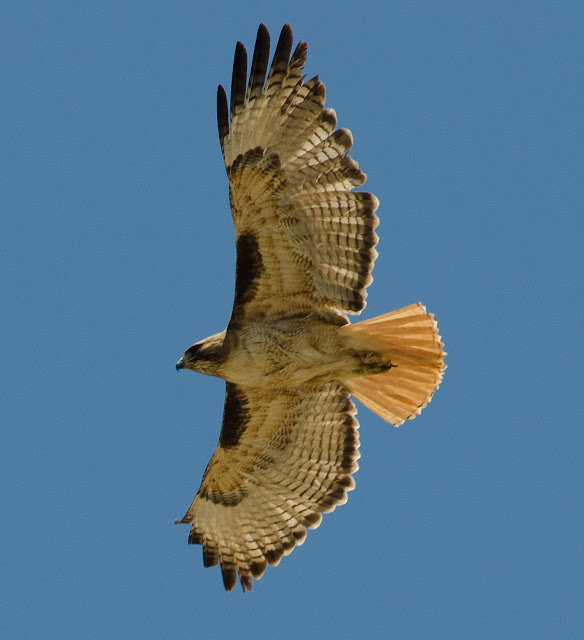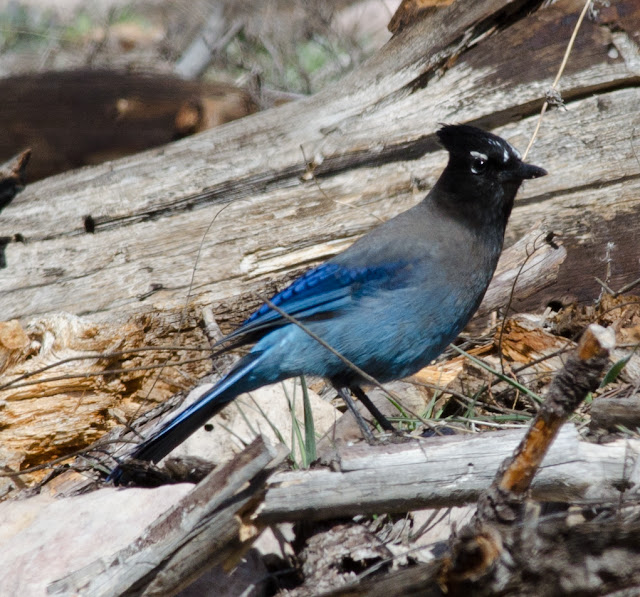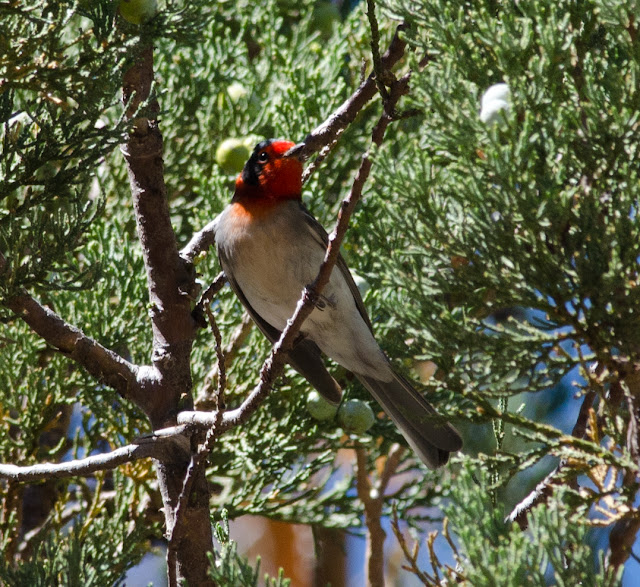After all my travels from that week off from work, I was finally home on Saturday and a very good birder friend, Muriel, contacted me and asked me if I would like to go to Sunflower birding on Sunday since the last time we were there, we missed out on the Common Black Hawk. I had already been thinking about going to Granite Reef on my own as I knew the Bullock's Orioles had returned. So we decided to combine the 2 destinations and off we went early on Sunday morning. The first stop at sunrise, was Granite Reef, and I was not disappointed as the Bullock's Orioles were easily found. This is a bird that has always eluded me in photos (at least clear photos) and this time wasn't much better as they love the very tops of the trees and are often hidden by small twigs of foliage. I did manage a much better photo this time around and am happy with the results. But there is always room for improvement.
Bullock's Oriole
My goal was filled so off we headed to Sunflower and what a great idea this was. The road in was particularly very birdy and we spent a long time walking along the road. We also found Muriel's target bird, the Common Black Hawk. We first spied it on the east side of the road back among the trees and in poor lighting. But then it decided to make our day and flew to the west side of the road on a clear open perch. Yes, it was fairly high up in the tree, but still a great view of the magnificence of this bird. We later also discovered its mate in another tree in a nest.
Common Black Hawk
There were lot of other birds happening about the same time, including a fly-over by a Zone-tailed Hawk and a Red-tailed Hawk. Summer Tanagers had returned and were singing from every direction. Turkey Vultures were sunning themselves in the cool of the morning air. One of the most unexpected finds was a Cedar Waxwing that Muriel spied, while I was concentrating on a Vermilion Flycatcher nest. Almost too much happening at once.
Zone-tailed Hawk
Red-tailed Hawk
Summer Tanager
Turkey Vulture
Cedar Waxwing
Cedar Waxwing
With all this activity, we had a hard time deciding to continue the walk on the other side of where the road is closed for vehicle travel, but so glad we decided to continue our walk further up the road. And it was definitely worth the extra walking. We discovered the Zone-tailed Hawk nest with presumably the female sitting on the nest.
Zone-tailed Hawk nest--you can see a head and part of the tail
The trees were alive with singing Yellow Warblers and Yellow-rumped Warblers. The Yellow Warblers are returning migrants and the Yellow-rumped Warblers (Audubon's), are migrants thinking about heading north, but a few of them were sporting their bright breeding plumage. And to top it off, another oriole was seen; this one being a Hooded Oriole. Really made my day to get 2 oriole species. In addition to all that color a very handsome Violet-green Swallow thought we were safe enough to stay perched for good looks from us.
Yellow Warbler
Yellow-rumped Warbler (Audubon's)
Hooded Oriole
Violet-green Swallow
While we were making our return walk to the car and the parking area we had a friendly encounter with a fairly large Gophersnake (at least that is what I think it is). Growing up I remember my father catching these reptiles back on the farm and then releasing them in places to control the rodent population. This one was quite long, about 3½ feet long and very nonchalant. It was not at all aggressive or agitated with us in any way. If fact, it had pretty much disappeared by the time we regained our composure and was retreating into the grass before I could think about photos. If you ever get to Sunflower and run across this beautiful reptile, just let it know that Gordon and Muriel said 'Hi'!
Gophersnake as it slithers away.
What a great day of birding and some wonderful birds. And I can thank Muriel for suggesting the trip and she just happens to be the person that has taught me just enough about photography to help me get a few good photos once in awhile.



























































